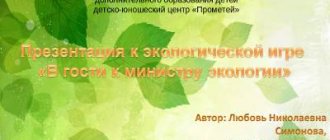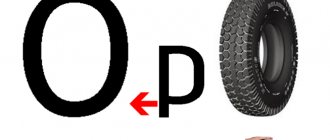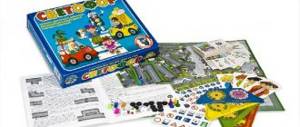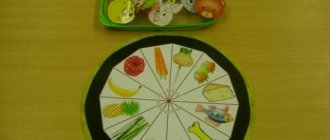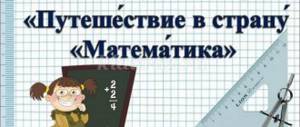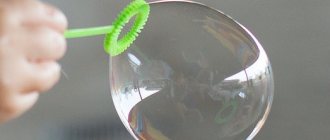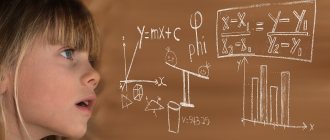Card index of didactic games on environmental education. Middle group.
Card index of didactic games on environmental education.
Middle group
Educator:
Stetsko Svetlana Alexandrovna.
“Where does it ripen?”
Goal: learn to use knowledge about plants, compare the fruits of a tree with its leaves.
Progress of the game: two branches are laid out on the flannelgraph: on one - the fruits and leaves of one plant (apple tree), on the other - the fruits and leaves of different plants. (for example, gooseberry leaves, and pear fruits) The teacher asks the question: “Which fruits will ripen and which will not?” children correct mistakes made in drawing up a drawing.
"The third wheel" (birds)
Goal: To consolidate knowledge about the diversity of birds.
Progress of the game: The teacher names the birds mixed up; whoever notices the mistake must clap his hands (sparrow, crow, fly, bullfinch, etc.).
"Flower shop"
Goal: to consolidate the ability to distinguish colors, name them quickly, and find the right flower among others. Teach children to group plants by color and make beautiful bouquets.
Progress of the game: Children come to a store where there is a large selection of flowers. Option 1: On the table is a tray with colorful petals of different shapes. Children choose the petals they like, name their color and find a flower that matches the selected petals in both color and shape. Option 2: Children are divided into sellers and buyers. The buyer must describe the flower he has chosen in such a way that the seller can immediately guess what kind of flower he is talking about. Option 3: Children independently make three bouquets of flowers: spring, summer, autumn. You can use poems about flowers.
“What’s extra?”
Goal: To consolidate knowledge of the signs of different seasons, the ability to clearly express one’s thoughts; develop auditory attention.
Progress of the game: The teacher names the season: “Autumn.” Then he lists the signs of different seasons (birds fly south; snowdrops have bloomed; leaves on the trees turn yellow; fluffy white snow is falling). Children name the extra sign and explain their choice.
"My Cloud"
Goal: To develop imagination and imaginative perception of nature.
Progress of the game: Children sit on blankets or squat, look at the sky and floating clouds. The teacher invites you to fantasize and tell them what the clouds look like and where they can float.
“When does this happen?”
Goal: To clarify and deepen children’s knowledge about the seasons.
Progress of the game: The teacher names the time of year and gives the chip to the child. The child names what happens at this time of year and hands over the chip
to the next player. He adds a new definition and passes the token, etc.
"Tell without words"
Goal: To consolidate ideas about autumn changes in nature; develop creative imagination and observation skills.
How to play: Children form a circle. The teacher suggests depicting the autumn weather with facial expressions, hand gestures, movements: it has become cold (children shiver, warm their hands, put on hats and scarves with gestures); It's cold raining (open umbrellas, turn up collars).
“It’s similar - it’s not similar”
Goal: To teach children to compare objects, recognize objects by description. Progress of the game: One child makes a riddle of animals, and the others must guess them from the description.
"Living inanimate nature"
Goal: Systematize children’s knowledge about living and inanimate nature.
Progress of the game: “Living” (inanimate) nature,” says the teacher and hands one of the players an object (or throws a ball). Children name objects of nature (the one indicated by the teacher).
“What kind of bird is this?”
Goal: To teach children to describe birds by their characteristic features.
Progress of the game: Children are divided into two groups: one group describes the bird (or asks riddles), and the other must guess what kind of bird it is. Then the groups change places.
"Find out whose sheet it is"
Goal: To teach children to recognize and name a plant by leaf, to find it in nature.
Progress of the game: Collecting leaves that have fallen from trees and bushes. The teacher suggests finding out which tree or shrub the leaf is from and finding evidence (similarity) with unfallen leaves that have a variety of shapes.
“It happens - it doesn’t happen” (with a ball)
Goal: Develop memory, thinking, reaction speed.
Progress of the game: The teacher says a phrase and throws the ball, and the child must quickly answer: frost in the summer (does not happen); snow in winter (sometimes); frost in summer (does not happen); drops in summer (does not happen).
"Find a Pair"
Goal: To develop children's thinking and intelligence.
Progress of the game: The teacher hands out one sheet of paper to the children and says: “The wind blew. All the leaves have scattered." Hearing these words, the guys spin around with leaves in their hands. The teacher gives the command: “One, two, three - find a pair!” Everyone should stand next to the tree whose leaf they are holding in their hands.
"Guess what's in the bag?"
Goal: to develop children’s ability to describe objects perceived by touch and guess them by their characteristic features.
Materials: vegetables and fruits of characteristic shapes and varying densities: onions, beets, tomatoes, plums, apples, pears, etc.
Progress of the game: do you know the game “Wonderful Bag”?, Today we will play differently. Whoever I offer to take an object out of the bag will not immediately pull it out, but after feeling it, he will first name its characteristic features.
"Do not snooze!" (wintering and migratory birds).
Goal: To develop auditory attention and reaction speed.
Progress of the game: The teacher gives all the children the names of the birds and asks them to watch carefully: as soon as their name is heard, they must stand up and clap their hands; Anyone who misses their name leaves the game. In the second version of the game, it is recommended to use the names of animals.
“Guess what kind of plant”
Goal: Learn to describe an object and recognize it by description; develop the ability to choose the most striking feature of a plant.
Progress of the game: The teacher invites the child to name one of the most characteristic features of the plant, the rest of the children must guess the plant itself. For example, a white trunk (birch); red cap with white dots (fly agaric), etc.
"Who lives where"
Goal: To develop the ability to group plants according to their structure (trees, shrubs).
Progress of the game: Children will be “squirrels” and “bunnies”, and one child will be a “fox”. “Squirrels” and “bunnies” are running around the clearing. On the signal: “Danger is a fox!” - “squirrels” run to the tree, “hares” - to the bushes. "Fox" catches those who perform the task incorrectly.
"Birds"
Target. Strengthen the ability to classify and name animals, birds, fish. Progress of the game. Children stand in a circle. The presenter calls (a bird, fish, animal, tree...), for example, “sparrow” and passes the ball to the neighbor, who calls “crow”, etc. Whoever cannot answer leaves the circle.
"Finish the sentence"
Goal: To teach to understand the causal relationships between phenomena; practice choosing the right words.
Progress of the game: The teacher (or child) begins the sentence: “I put on a warm fur coat because...”. The child who completes this sentence makes the beginning of a new one.
"What season?"
Goal: To teach to perceive poetic text; cultivate aesthetic emotions and experiences; consolidate knowledge about the months of each season and the main signs of the seasons.
Progress of the game: Writers and poets in poems glorify the beauty of nature at different times of the year. The teacher reads a poem, and the children must highlight the signs of the season.
“Where does it grow?”
Goal: to develop children’s ability to group vegetables and fruits, to develop quick reaction to the teacher’s word, endurance, and discipline.
Rules of the game: sort out the vegetables and fruits, and put some in the garden, others in the garden (imitation - pictures of the garden and vegetable garden). The team that quickly puts all the items in their places wins.
Progress of the game: Children are divided into two teams: vegetable growers and gardeners. Vegetables and fruits (dummies can be used) are laid out on the table. At the teacher’s signal, children sort vegetables and fruits into the ones corresponding to the pictures. The team that finishes the job first wins. Children not participating in the teams check the correctness of the selection. After this, the winning team is announced. The game continues with other teams.
"Our friends"
Goal: To expand children’s ideas about the lifestyle of animals that live in the house (fish, birds, animals), about caring for them, about their homes, to cultivate a caring attitude, interest and love for them.
Material: lotto cards with images of animals: parrot, aquarium fish, parrots, hamster, turtle, etc. Small cards depicting their homes (cage, terrarium, aquarium, box, etc.), food.
Progress of the game: Lotto cards are distributed to the participants of the game, the leader has small cards with the image turned down. The presenter takes any card and shows it to the participants. The participant who needs this card raises his hand and explains why this card is needed specifically for his animal. To make it more difficult, you can add squats that are not related to these animals.
"Edible - not edible"
Goal: to form and consolidate children’s knowledge about vegetables and fruits and berries. Develop memory and coordination.
Material: Ball.
Progress of the game: The presenter names a vegetable, fruit, berry or any object, throws the ball to one of the participants, if the object is one of the given ones, then he catches it. You can play with the whole group at once using claps (clap if the item is not one of the given ones)
"Wonderful bag"
Goal: To form and consolidate children’s knowledge about various natural objects (animals, vegetables, fruits, etc.). Develop fine motor skills of fingers, tactile sensations, and speech of children.
Material: Beautifully designed bag, various toys imitating animals, real or fake vegetables and fruits.
Progress of the game: The leader holds a bag of objects, invites the children to come up one by one and identify the object by touch without pulling it out, and name the characteristic features. The rest of the children must guess from its description what kind of object it is, which they have not yet seen. After this, the child pulls out an object from the bag and shows it to all the children.
“When does this happen?”
Goal: To clarify and consolidate children’s knowledge about seasonal changes in nature and animal life in different seasons of the year.
Material: Large lotto cards with a picture of any season. Small cards with models of signs of different seasons.
Progress of the game: The game is played like a lotto. The presenter has small cards with the image turned down. The presenter shows a card with a model, the players say what it is and when it happens. The child explains why this card is needed specifically for him. The one who closes his card first wins. But the game continues until all participants close their cards.
Why do we need didactic games on ecology in preparatory groups of preschool educational institutions?
Didactic games on ecology in the preparatory group occupy a special place. In younger groups, children are just beginning to explore the world, but middle-aged or older children form their own ideas about the world around them. Therefore, environmental education of preschool children is the starting point and basis of his own vision.
Discussion of environmental problems in kindergarten
From this moment on, all the child’s knowledge will be conscious and become part of his personality. Therefore, it is easiest to instill a caring attitude towards nature in a playful way.
For your information! While playing, the baby feels better, rejoices, and experiences deeper emotions. However, group activities develop cohesion and make learning more fun.
At the request of the Federal State Educational Standard, classes are carried out throughout the year. They should not be interrupted. After a course of didactic games in kindergarten, the child should know the rules of attitude towards nature.
Children playing in a preschool
